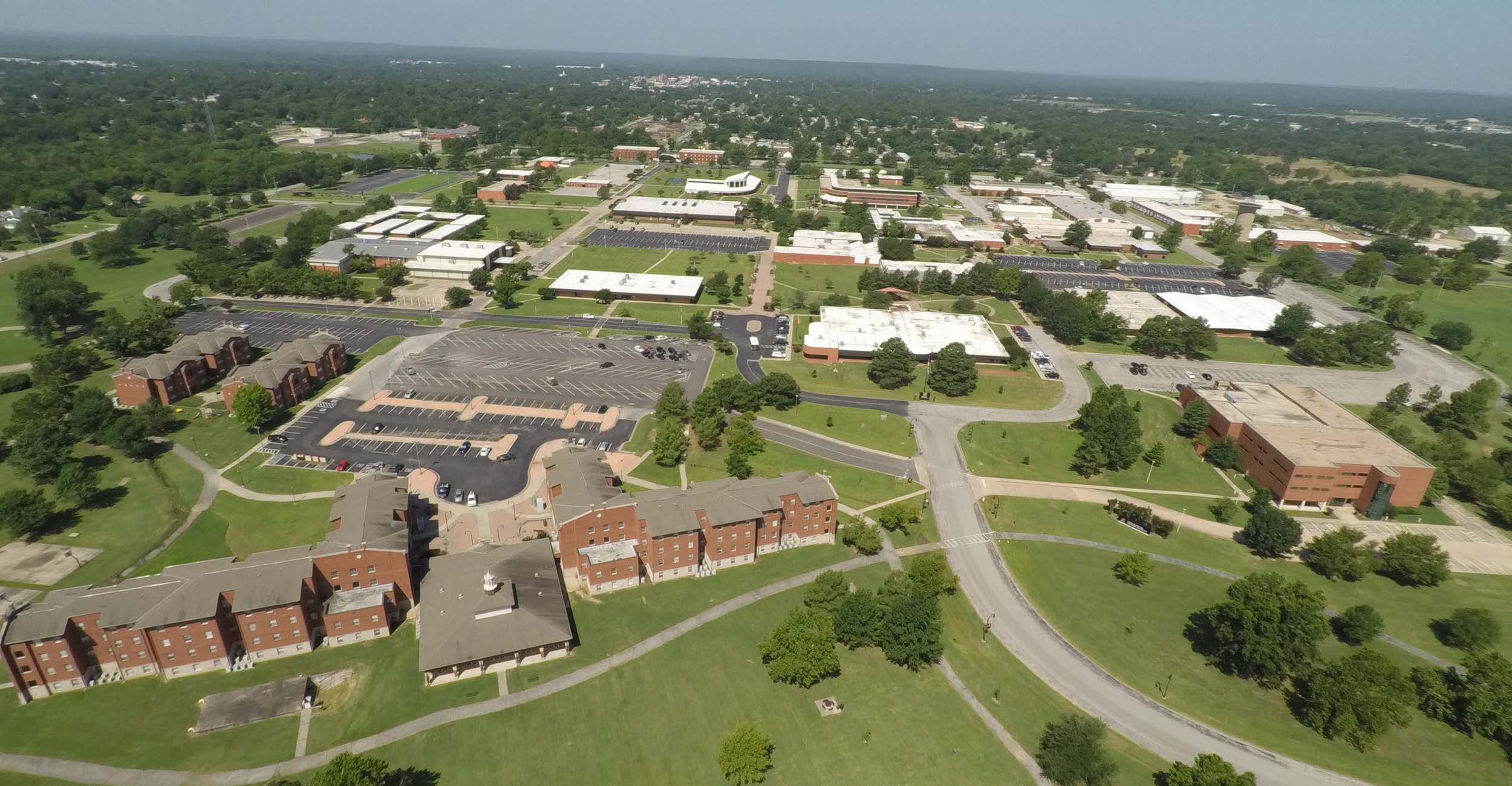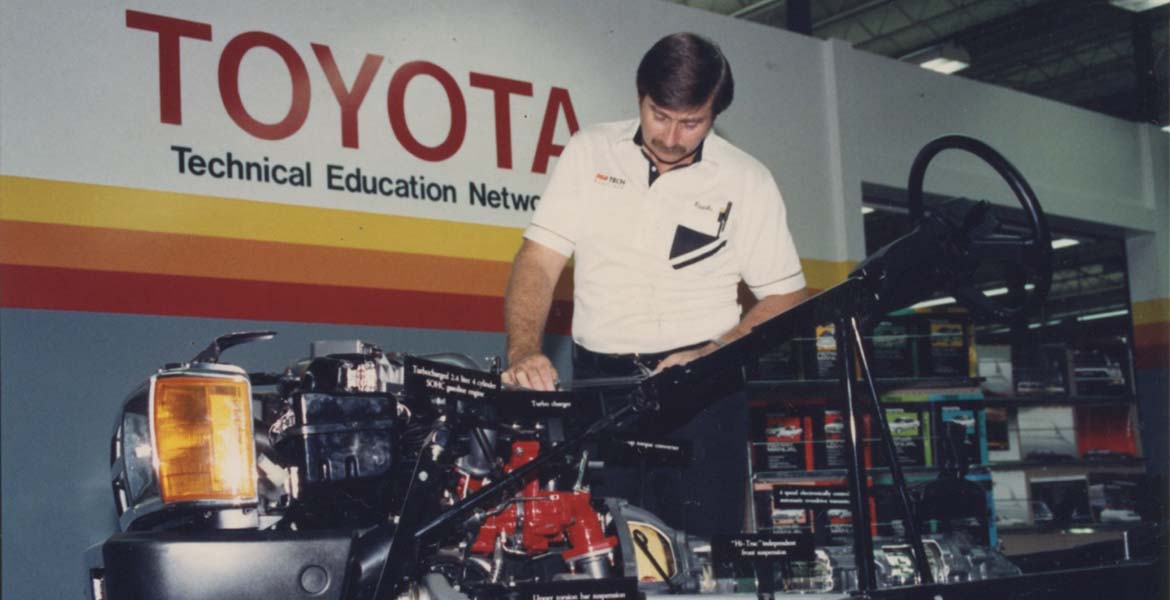
OSUIT celebrates its 75th anniversary
Wednesday, August 25, 2021
Media Contact: Mack Burke | Editorial Coordinator | 405-744-5540 | editor@okstate.edu
Okmulgee campus continues to prepare students for extraordinary careers
In 1946, with just one dollar, Oklahoma A&M purchased the campus now known as Oklahoma State University Institute of Technology (OSUIT) — quite the return on investment when you consider the economic impact this branch campus has had on Oklahoma over the last 75 years.
Back then, World War II had just ended, and the Stillwater campus was facing overcrowding concerns. OAMC President Henry G. Bennett also saw the enormous need for a vocational school to help returning veterans transition their skills into civilian jobs.
The property Bennett had his eye on in Okmulgee was the Glennan Military Hospital, which had housed wounded U.S. soldiers and prisoners of war. The facility was to be decommissioned after the war, and Bennett took on the mission of acquiring it.
In a matter of months — despite extensive bureaucratic red tape — Bennett’s vision became a reality. In October 1946, 456 students started coursework at the Oklahoma A&M College School of Technical Training. Some of the early programs included baking, dry cleaning, auto mechanics, diesel mechanics, drafting, electrical maintenance, plumbing, printing, wood shop and shoe rebuilding.
The vast majority of the first students were veterans, but civilians quickly realized the type of educational opportunities available and began enrolling, nearly tripling the headcount by 1949.
Although the use of the facility had changed, the university still looked much like a military hospital — complete with barracks serving as student housing and ramps that provided wheelchair access from building to building.
The barbed wire that once surrounded the property was taken down, and the trenches were filled. Faculty and staff recycled every piece of wood, using it for desks and shelves for classrooms and podiums for teachers.
Bennett named L. Keith Covelle the school’s first president, a position then called
a director. And in 1949, the Oklahoma A&M College School of Technical Training held
its first graduation.
Covelle had a deeply ingrained philosophy of learning by doing and saw a great need to bolster the university’s societal impact by preparing young people for the workaday world as skilled technicians. In 1958, the campus unofficially became known as Oklahoma State Tech. Covelle served as director until 1963. Upon his retirement, he said, “I built the foundation. It’s up to you to continue to build this great school.” His next three successors did just that.
Director Wayne Miller oversaw the construction of nine new facilities and the renovation of several more. He also added millions of dollars’ worth of equipment for student use. Student enrollment tripled again during Miller’s 20-year tenure.
During the 1970s, the campus began to lose the barracks look, and the 1980s saw a building boom on campus.
The longest-serving president, Robert Klabenes, replaced the outdated wooden barracks with state-of-the-art classrooms and residence halls, totaling more than $150 million in new construction and remodeling projects. In 2007, the campus officially changed its name to Oklahoma State University Institute of Technology.
Looking Toward the Future
OSUIT’s fourth president, Dr. Bill R. Path, took over in 2011 and continues to lead with an ambitious strategic plan to provide advanced technical education to enhance the institution’s ability to meet global workforce demands.
Path’s initiatives include a comprehensive longrange forecast focused on developing OSUIT’s instructional spaces to meet student needs and bolster Oklahoma’s skilled labor force. He also has been instrumental in a revitalization project with the city of Okmulgee and led the effort to purchase and restore downtown buildings for student housing.
 While $1 can’t move the needle on capital projects these days, the education and experiences
students have gained over the last 75 years remain priceless.
While $1 can’t move the needle on capital projects these days, the education and experiences
students have gained over the last 75 years remain priceless.
The OSUIT campus now has 38 academic programs, including associate in science, associate in applied science and bachelor of technology options. It has grown to include over 1 million square feet of educational space, 21 academic buildings and seven residence halls.
Even as it evolves and grows, OSUIT’s founding mission of serving and prioritizing veterans remains essential to its foundation today; OSUIT is consistently named a military-friendly school.
Many original programs — programs vital to the state’s workforce — are still offered today, including culinary arts, construction, air conditioning and refrigeration, automotive service, diesel mechanic, design drafting, electrical engineering and graphic design.
Although many things have changed in the past 75 years, OSUIT has never wavered from its mission to provide a high-quality education that prepares students for extraordinary careers.
OSUIT Milestones
February 1946
OSU President Henry G. Bennett purchases the Glennan Military Hospital in Okmulgee from Army Surplus for $1. The hospital covered slightly more than 600,000 square feet in 80 buildings.
October 1946
L. Keith Covelle is named the first president (then known as director), and classes officially begin at Oklahoma A&M College School of Technical Training with 456 students, all WWII veterans.
1949
The first official graduation ceremony is Jan. 14, 1949.
1963
In 1963, Wayne W. Miller becomes OSUIT’s second president. Over the next 20 years, millions of dollars’ worth of instructional equipment is added, student enrollment triples and nine new facilities are constructed, including new student housing.
1983
Dr. Bob Klabenes becomes the third president of OSU Tech. Over the next 27 years, the campus gains $150 million in new construction and remodeling projects. Dr. Klabenes also facilitated the establishment of the Green Country Technology Center, the College of the Muscogee Nation and the OSUIT MidAmerica Industrial Park Advanced Training Center.
1985
Toyota agrees to establish its first international partnership with OSU Tech. Industry partnerships provide millions of dollars in equipment, student scholarships and faculty support. Today, OSUIT is proud to have more than 700 industry representatives that serve on advisory boards for each program of study.
1988
Culinary Arts students collaborate with the Okmulgee community to set the Guinness World Record for the largest pecan pie during the annual Pecan Festival downtown.
2011
Dr. Bill R. Path becomes the fourth president of OSU Institute of Technology. His initiatives include a comprehensive long-range forecast focused on developing OSUIT’s instructional spaces to meet increasing industry needs. He also has been instrumental in a revitalization project with the city of Okmulgee and led the effort to purchase and restore downtown buildings for student housing.
2017
The Grand Old Post Office Student Housing building in downtown Okmulgee is dedicated Nov 28, 2017. The loft-style housing was originally a two-building complex built in 1918 and 1919 and previously housed the original Okmulgee post office.
2019
OSUIT introduced the new online Bachelor of Technology in Applied Technical Leadership degree for fall 2019. The accelerated degree program is designed to address the needs of professionals in technical industries who wish to advance into leadership roles.
Photos By: OSUIT Archives
Story By: Lindsay Lynch | STATE Magazine
